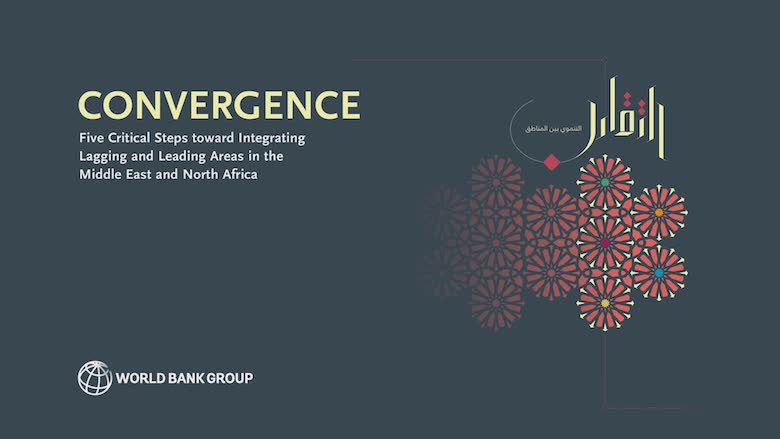Key findings of Convergence: Five Critical Steps Toward Integrating Lagging and Leading Areas in the Middle East and North Africa
MENA countries are not benefiting from the three spatial dimensions of market-driven economic growth: agglomeration, migration, and specialization. Instead, their economic development is characterized by three striking symptoms of institutional inefficiency:
- Cities are physically and economically fragmented, precluding the economic benefits of agglomeration.
- People are spatially and economically stuck in place, lacking tradable skills and, therefore, limited in mobility.
- National economies are walled off from regional and global economies by many barriers that governments in the Middle East and North Africa have either created or failed to remove.
As a result, Middle East and North Africa cities are spatially sprawling and fragmented, factors linked to polarization and social segregation, often the root causes of violence and crime. Compact urban areas, where the communities are more mixed and not spatially segregated, is found to reduce this phenomenon.
There are five main policies to tackle spatial and territorial inequities in the Middle East and North Africa:
- Strengthen coordination and complementarities across initiatives. Development strategies are more likely to succeed if they are multidimensional, including access to energy, transport, land, and markets—in the same place, whether sequentially or concurrently. A good place to start is by anchoring investments in and around cities.
- Redistribute roles and responsibilities across tiers of government. Citizens in different parts of the country have varying needs, and local conditions require flexible service delivery models. Redistributing responsibilities for local revenue generation and local service provision to local governments can make them better equipped and more accountable.
- Enable mobility of people between lagging and leading areas. On average, people in MENA are half as mobile domestically as people in other parts of the world. Our research shows that living standards of people moving internally to major cities can increase by an average of 37% in the region. Education systems across the region need to be reoriented toward marketable skills.
- Build dense and connected cities. Well-functioning cities offer a wide variety of jobs – for women and men. Making land markets in cities more efficient is critical for agglomeration and specialization – two dynamics that enhance job creation and economic prosperity. Whether in larger or in smaller (secondary) cities, agglomeration and specialization require the benefits from high economic density, which concentrates economic activity geographically. For this, the fabric of cities needs to be spatially connected, dense with people, and transit-oriented – not sprawling that perpetuates the dispersion of people and jobs. Planners and regulators can attract firms to invest in cities by reducing frictions such as zoning regulations, impediments to property acquisition and new construction (costs, height limits, density limits), challenges to local business registration and licensing, limits on news and information, and obstacles to developing local business networks.
- Enhance market access nationally and regionally. Historically, MENA’s cities were part of economically important global trade networks. Many of these cities persisted into modern times as large urban areas. But governments in the region have managed to shrink the networks from global to local. These networks have, at a minimum, to be expanded to national and regional dimensions. A good place to start would be to improve the links across national borders — reducing tariffs, improving logistics, and facilitating trade, and instituting migration protocols. Such efforts will grow the economies, providing much-needed resources to redistribute in areas left behind.
Regional integration across the MENA region will break down the walls between countries, connect firms to larger markets, and foster ever-larger scale and agglomeration economies specializing in tradable goods and services.
Download the Convergence report at www.worldbank.org/menacities


